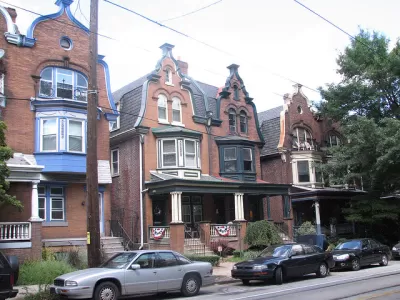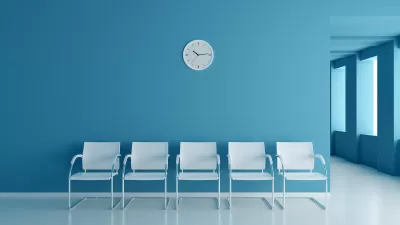The city of Philadelphia released a document detailing its intentions around housing and related policies. The plan, which has been described as "ambitious," places a focus on equity.

Jake Blumgart reports on a housing "action plan" released by the city of Philadelphia on Wednesday. He writes, "The plan received a largely warm welcome from City Council members and housing industry insiders who had reviewed it by the end of the day. Many respondents noted that the plan is ambitious — it includes several policy proposals that proved controversial — while notably avoiding comment on several large roadblocks facing the city's housing policy."
Proposals in the plan include stronger policies for eviction prevention and a shallow rent subsidy of "$300 a month for a year for families transitioning from homelessness or facing a rental crisis." Philadelphia's director of planning and development, Anne Fadullon, has often mentioned such a plan. It also enjoys some support from Philadelphia's city council.
Another suggestion is to tweak zoning rules to allow accessory dwelling units, an idea that hasn't so far garnered much traction in the city. Parking, however, was never mentioned, Blumgart says. "Instead, a new bill increasing parking requirements in at least some parts of the city is expected later this Council session."
The plan was largely created outside the public eye, and didn't benefit from much public engagement. Some stakeholders, like Beth McConnell of the Philadelphia Association of Community Development Corporations, are asking whether this is "a practical roadmap versus a set of aspirational ideas."
FULL STORY: Philly maps 10-year course toward building, preserving 100,000 housing units

Alabama: Trump Terminates Settlements for Black Communities Harmed By Raw Sewage
Trump deemed the landmark civil rights agreement “illegal DEI and environmental justice policy.”

Planetizen Federal Action Tracker
A weekly monitor of how Trump’s orders and actions are impacting planners and planning in America.

The 120 Year Old Tiny Home Villages That Sheltered San Francisco’s Earthquake Refugees
More than a century ago, San Francisco mobilized to house thousands of residents displaced by the 1906 earthquake. Could their strategy offer a model for the present?

Indy Neighborhood Group Builds Temporary Multi-Use Path
Community members, aided in part by funding from the city, repurposed a vehicle lane to create a protected bike and pedestrian path for the summer season.

Congestion Pricing Drops Holland Tunnel Delays by 65 Percent
New York City’s contentious tolling program has yielded improved traffic and roughly $100 million in revenue for the MTA.

In Both Crashes and Crime, Public Transportation is Far Safer than Driving
Contrary to popular assumptions, public transportation has far lower crash and crime rates than automobile travel. For safer communities, improve and encourage transit travel.
Urban Design for Planners 1: Software Tools
This six-course series explores essential urban design concepts using open source software and equips planners with the tools they need to participate fully in the urban design process.
Planning for Universal Design
Learn the tools for implementing Universal Design in planning regulations.
Clanton & Associates, Inc.
Jessamine County Fiscal Court
Institute for Housing and Urban Development Studies (IHS)
City of Grandview
Harvard GSD Executive Education
Toledo-Lucas County Plan Commissions
Salt Lake City
NYU Wagner Graduate School of Public Service





























